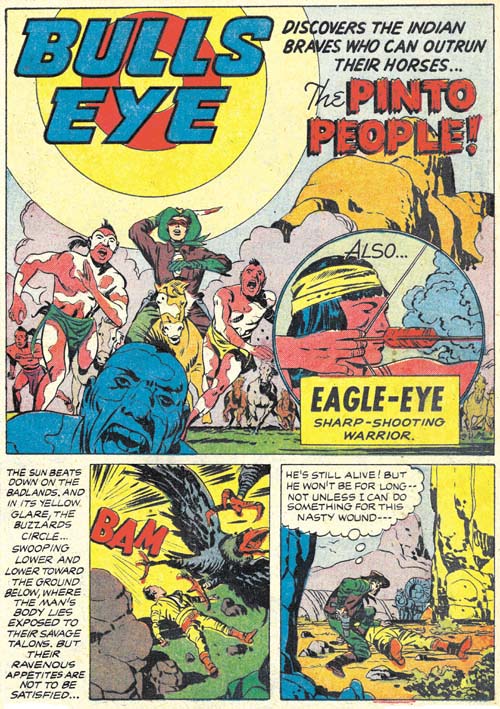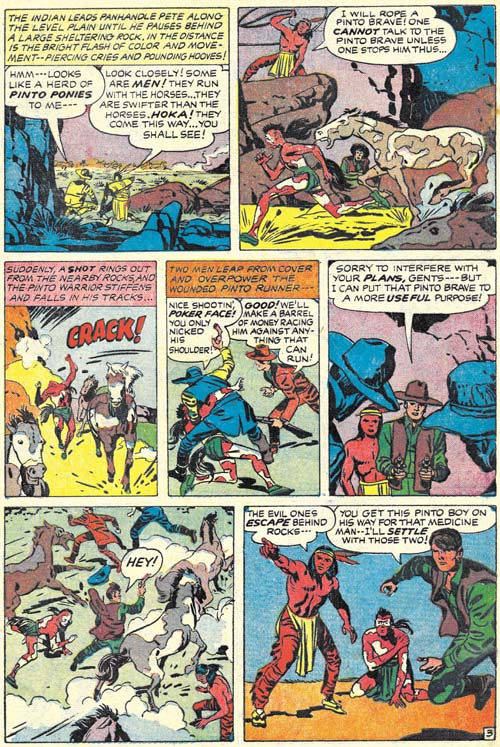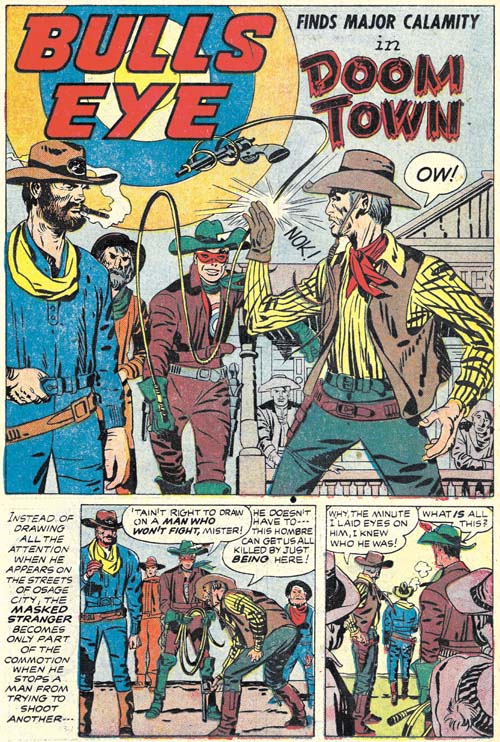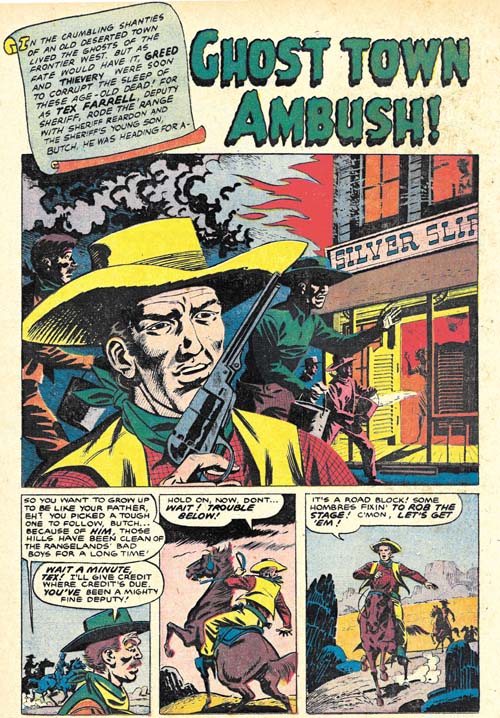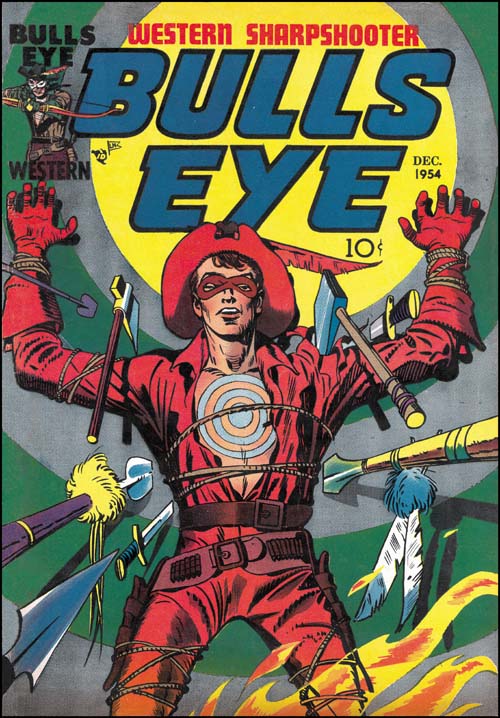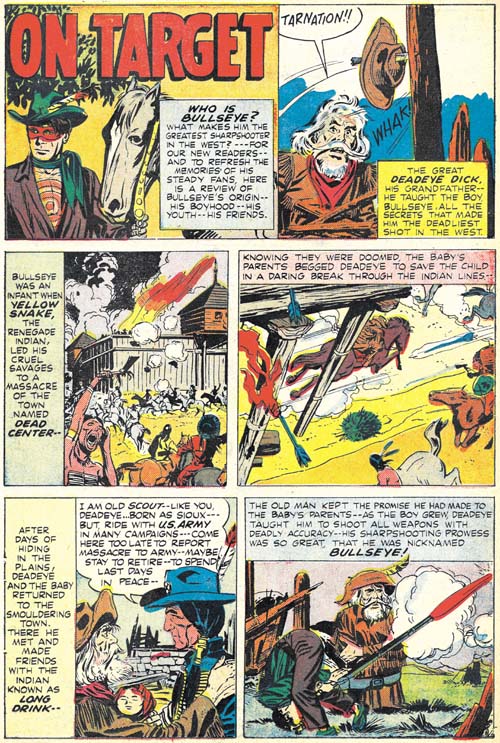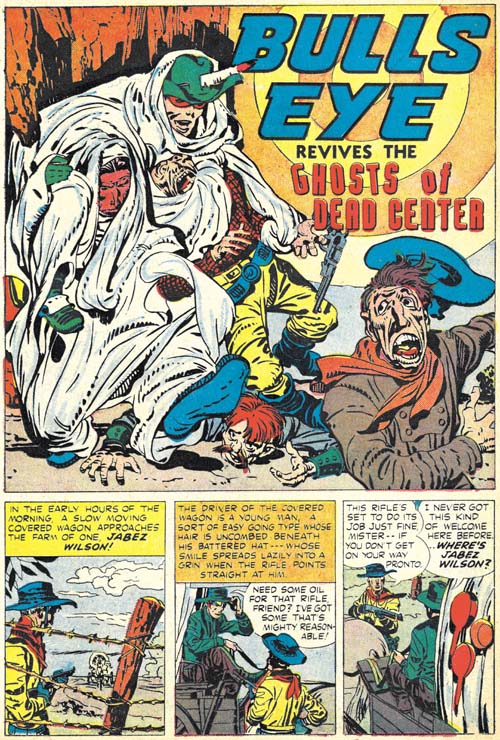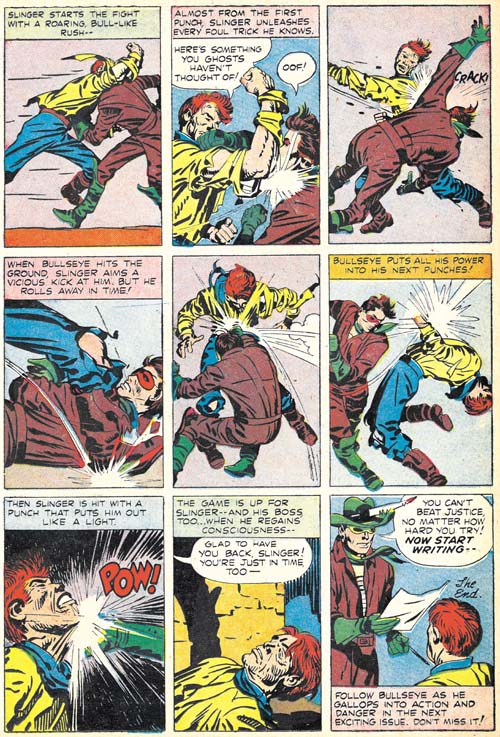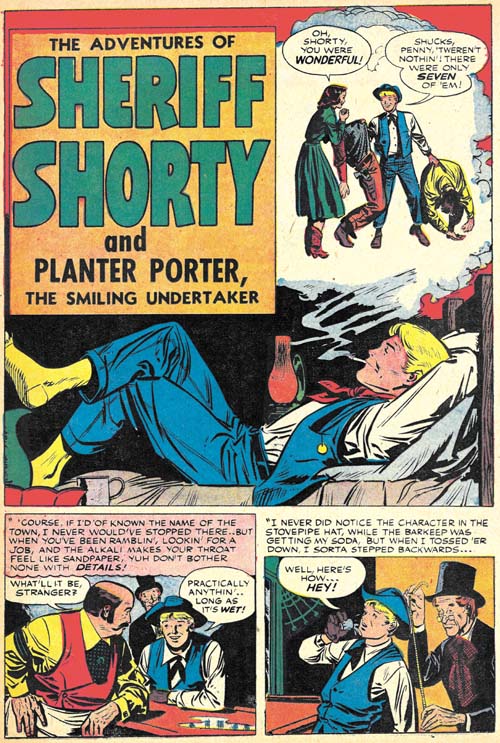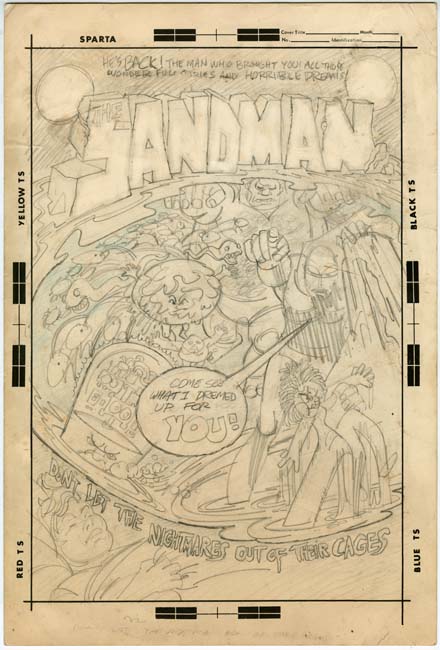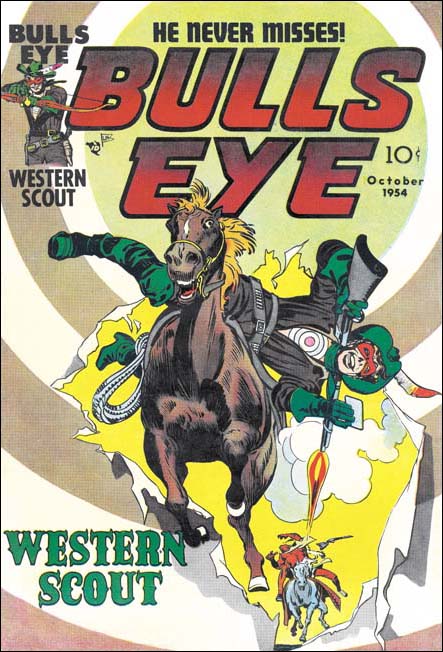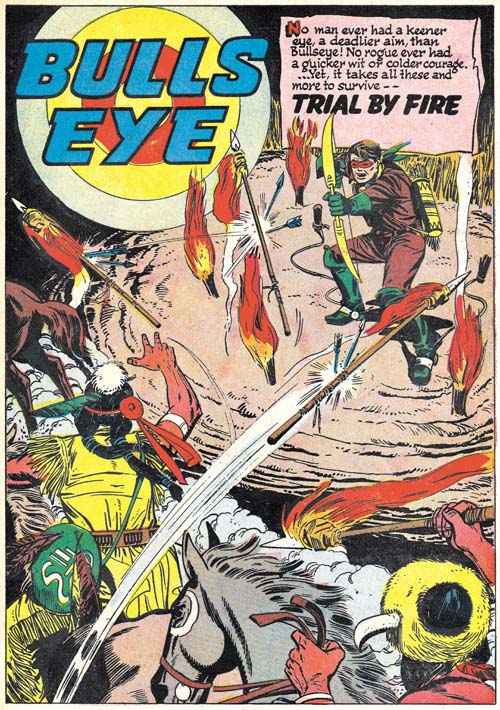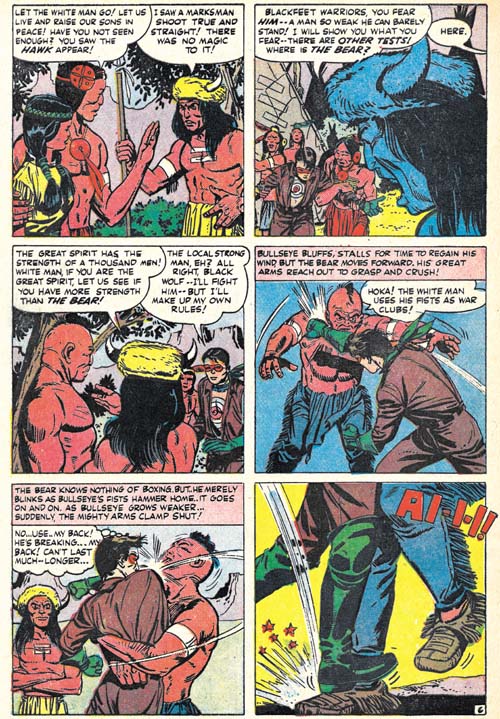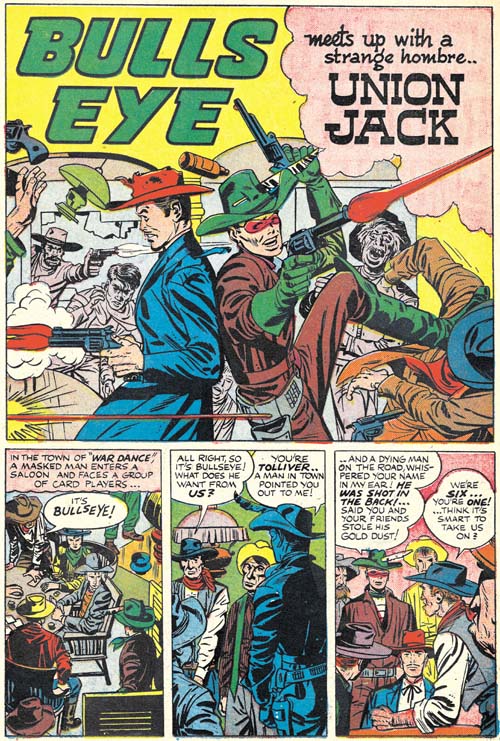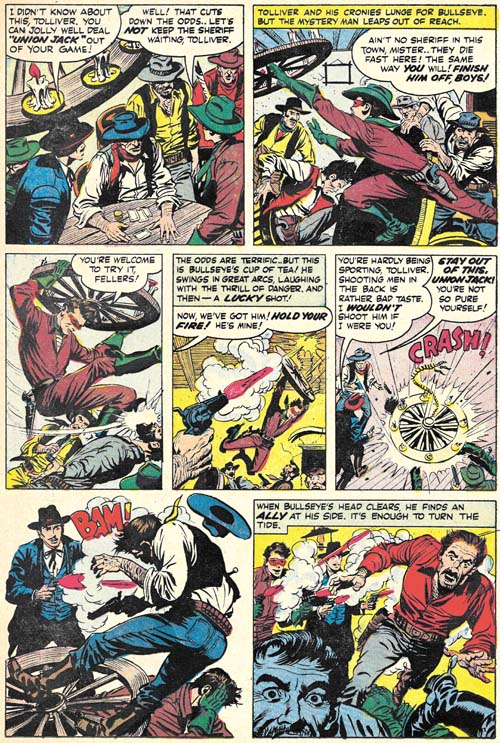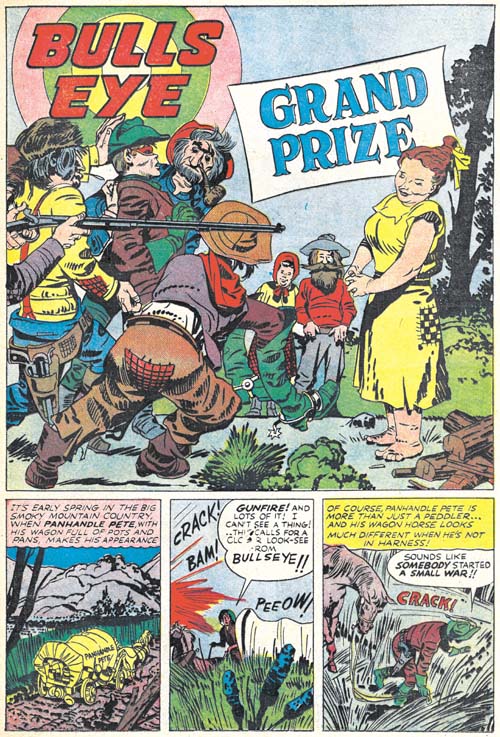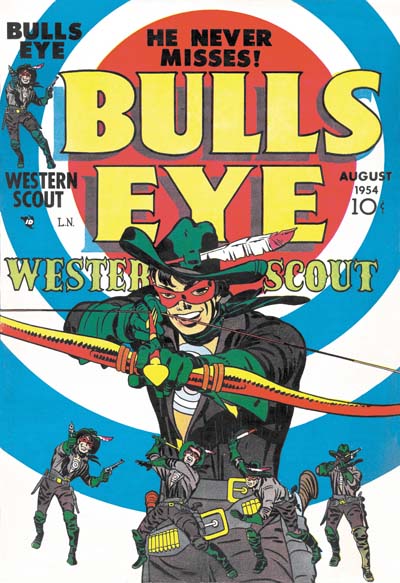
Bullseye #1 (August 1954), pencils and inks by Jack Kirby
In 1954 Simon and Kirby launched their own company which they called Mainline. For years Joe and Jack had produced comics but this time they would be publishers themselves. Mainline released four titles: Bullseye*, In Love, Foxhole and Police Trap. I have previously written about Foxhole and In Love, but had not gotten around to the other two titles. For various reasons this seems like a good time to correct that neglect. Certainly my delay in discussing Bullseye was not due to it being an inferior comic. While Foxhole remains my personal favorite of the Mainline titles, Bullseye has much to recommend it particularly for Kirby fans.
Simon and Kirby’s modus operandi for creating new titles was for Jack Kirby to provide much of the art for the initial issues with less support from Jack in latter releases. This was decidedly not the MO for the Mainline titles. The closest any of them come to the original MO was In Love where for the premier issue Jack drew the featured story, a whooping 20 pages. Kirby drew little for the second issue and while In Love #3 had a lot of Kirby almost all of it was a recycled syndication proposal strip. Kirby provided no story art for Foxhole #1 but 8 pages for Foxhole #2 and nothing thereafter until Foxhole #6. Jack provided very little for Police Trap until the final issues. Why the change in MO? It certainly was not due to any change of opinion about the value of Jack’s art. After all he would provide most of the cover art. The logical explanation is that much of Kirby’s time was required to help run the new company. I have seen a invoice submitted to Simon and Kirby during this period that deducts an advance Jack Kirby gave to the artist.
The way Simon and Kirby introduced new features changed over the years. The Captain America origin story is short and seems little more than something to get quickly out of the way so they could go with the more interesting stories. The origin story seem to become more important to Simon and Kirby over the years. With Bullseye, except for a few fillers, the entire magazine is dedicated to the origin story. The origin is told in three chapters; “The Boy”, “The Youth”, and “The Man”.
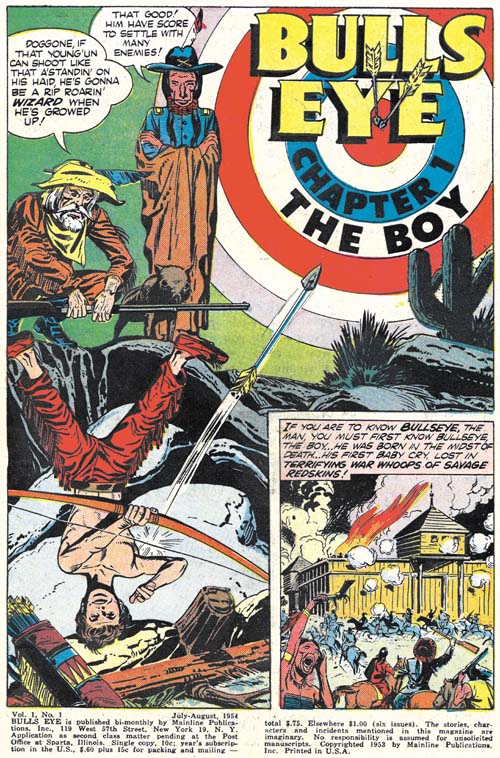
Bullseye #1 (August 1954) “Bullseye, The Boy”, pencils by Jack Kirby, inks by John Prentice
The saga starts with Bullseye’s birth during an Indian attack. The raid turns into a massacre and only the baby and his grandfather, Deadeye Dick, escape. The boy is raised by his grandfather and an old Indian scout, Long Drink. Under the old man’s tutelage, Bullseye becomes a master marksman. The Indians return and brand the boy’s chest with a target, the Bullseye mark that plays an important roll in the design of the comic covers and splashes.
The boy being an orphan is a common theme for Simon and Kirby. Previously the Newsboy Legion, the Boy Commandos and the boys of Boys’ Ranch had all been orphans. Much has been made of Kirby’s making orphans of their characters but it is good to remember that he was not the only one doing this. After all Superman, Robin and Billy Bates (Captain Marvel’s alter ego) were orphans as well.
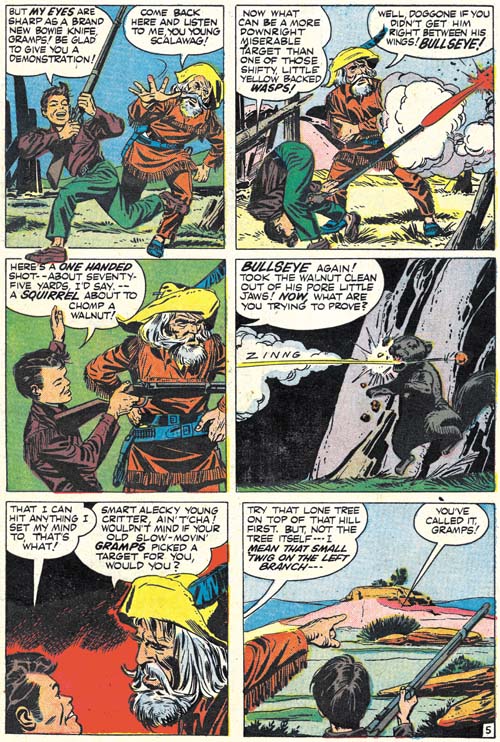
Bullseye #1 (August 1954) “Bullseye, The Boy” page 5, pencils by Jack Kirby, inks by John Prentice
The first chapter is drawn by Jack Kirby and inked by John Prentice. Well except for page 2 which is sufficiently different from the rest that I believe Prentice drew it as well. Prentice does not use the Studio style inking that was so commonly applied to Kirby’s pencils but instead John works in a manner more typical of his own work. Kirby’s art was influenced by Milton Caniff while Prentice followed the footsteps of Alex Raymond. With such disparity in styles you would think the combination of Kirby pencils and Prentice inks would be a poor mix but I think it comes off surprisingly well. Jack’s inkers during the Simon and Kirby collaboration range the gamut from horrible to amazing but I feel Prentice ranks among Kirby’s top inkers. However I do not believe John ever inked Jack’s pencils other than in this Bullseye issue.
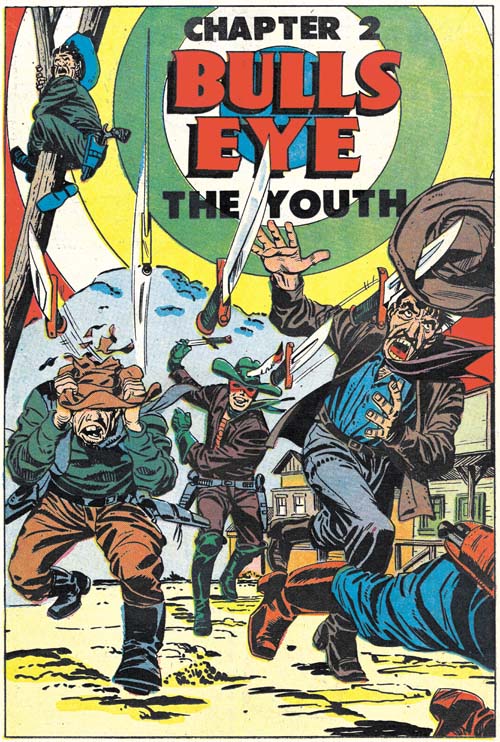
Bullseye #1 (August 1954) “Bullseye, The Youth”, pencils by Jack Kirby, inks by John Prentice
Bullseye not only the master of pistols and rifles, but in all manners of weapons that are shot or thrown. For this splash Kirby has created a classic example of exaggerated perspective. What a great combination of action and humor. John Prentice did the inking but it appears Kirby did some touch-ups (for example adding the picket fence crosshatching on the green shirt and the drop strings on the grey pants, see my Inking Glossary). Generally Simon or Kirby would ink the splash page but having Prentice do the inking provides a much better integrated chapter. John does a much better job ink the splash for this chapter than he did for the previous one.

Bullseye #1 (August 1954) “Bullseye, The Youth” page 5, pencils by Jack Kirby, inks by John Prentice
The rest of the chapter following the splash page was penciled and inked by John Prentice. John does a good job, but of course I expect Kirby fans would prefer that Jack had done the honors. I have chosen one of the more uncharacteristic pages from the chapter to show above. I provide this page because it best address the question of Kirby layouts. One of the conclusions I reached in my long serial post Art of Romance was that Kirby did not generally provide layouts for stories drawn by other artists as has so often been asserted by Kirby fans in the past. When I previously showed this page in the blog (John Prentice, Usual Suspect #3) Nick Caputo pointed out that the Judge looked like a Kirby creation. I have to admit that the heavy set Judge does not look like a typical Prentice character. However I find panel 2 to be an even more convincing example of a Kirby layout. It seems so typical for Jack and I have never seen John do anything like it. So I agree that Kirby may have been providing layouts for this chapter. There are other panels that look more like Prentices’s own layouts so I suspect that either Kirby provided only a rough or incomplete layout or that Prentice felt free to modify them whenever he desired.
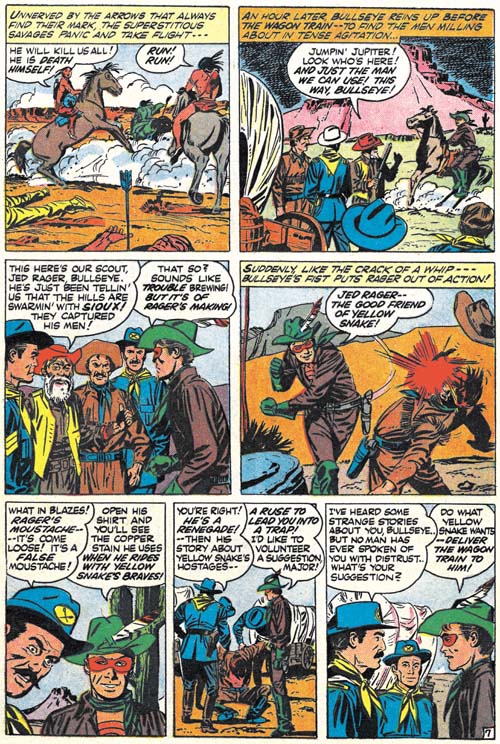
Bullseye #1 (August 1954) “Bullseye, The Man” page 7, pencils by Jack Kirby, inks by John Prentice
The third chapter was executed in the same manner as the previous chapter; a Kirby penciled and Prentice inked splash followed by a story drawn and inked by Prentice. Once again there are indications the Kirby provided some layouts. Panel 4 of the page shown above is a really good piece of evidence supporting a Kirby layout. While Prentice did not do a lot of action scenes during the time he worked for Simon and Kirby, what fight scenes he did looked nothing like this one. I do not recall ever seeing among Prentices’s art such a rotational slug or the way the man falls back. But both are frequently occurring motifs in Kirby’s work.
So does the fact that Kirby provided layouts of some sort for Bullseye contradict my conclusion based on the romance comics that he did not provide layouts? Not really because during the Mainline period things were done rather differently than what had previously been the norm. Typically Kirby’s contribution to the first issue of a new title would be more significant than what occurred in Bullseye. Apparently Jack was too busy with Mainline business matters to devote much time to the art. Providing layouts was the next best thing to doing drawing himself.
This begins another serial post. I am not sure yet whether I will write a separate article on each issue or combine some. While each Mainline title has its own unique qualities, Bullseye is something special. Particularly for Kirby fans.
footnotes:
* This title is most commonly called Bulls-Eye but I am not sure why. Bullseye is a name and it should be spelled in the manner used by the creators of that name. The hyphen was never used in the actually comics. On the cover and splashes the name occupies two lines so I suppose a good argument can be made that Bulls Eye should be the proper designation. That name format also appears in some of the indices, but others use the single word form, Bullseye. When the character is referred to in the actual stories he is always called Bullseye.




